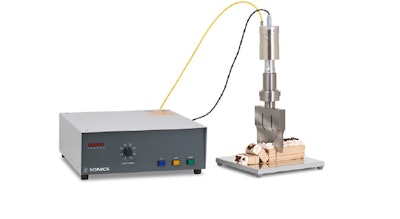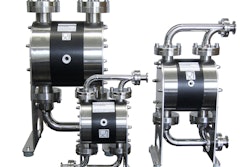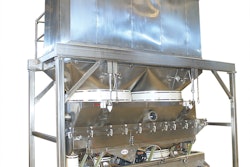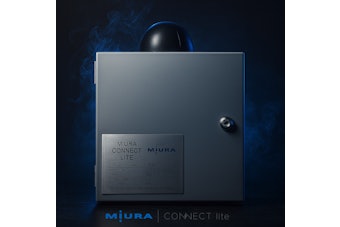Ultrasonic food cutting uses high-frequency vibratory knives. Applying ultrasonic vibration to a cutting tool creates a nearly frictionless cutting surface and can slice a multitude of food products cleanly without smearing.
Very thin slices are also possible due to the reduced resistance. Foods containing items such as vegetables, meats, nuts, berries and fruits can be cut without deformation or displacement of the internal product. The low friction condition also reduces product sticking to the cutting tools, resulting in more consistent cuts and less down time for cleaning. “Because of the advanced process control that is available in ultrasonic generators, cutting performance can be easily manipulated by simply adjusting the equipment parameters,” states Bill Aurand, packaging technology manager with Sonics & Materials, Inc.
According to Aurand, ultrasonic food cutting systems are often used in the following applications:
• Cutting hard and soft cheeses, including products containing pieces of nuts and fruit
• Cutting sandwiches, wraps, and pizzas for catering industries
• Cutting nougat, candy bars, granola bars and healthy snack bars
• Cutting semi-frozen meats and fish
• Cutting fresh or frozen vegetables
• Cutting breads or cake products
• Cutting ice cream and other frozen snacks
Ultrasonic food cutting system are comprised of an ultrasonic generator (power supply); an ultrasonic converter (transducer); an ultrasonic booster; an ultrasonic cutting tool (horn/sonotrode); and a material handling system.
Softer foods and those containing a variety of textures typically require higher amplitudes. For example: soft candies and nougat, soft cheeses and those containing nuts or pieces of fruit, products that contain various hard and soft ingredients such as sandwiches and wraps, and cakes and breads. Firm food products often have lower amplitude requirements. For example: frozen foods, firm cheeses, and vegetables.
Ultrasonic food cutting may not be suitable for every food cutting operation, says Aurand. “However, high frequency vibration applied to cutting tools does provide significant benefits,” he states. Primarily, ultrasonic technology enhances the cut quality and consistency, and cleanly slice multi-textured food products without deformation.
To learn more about the latest food and beverage processing technologies, join 7,000 of your peers across all food and beverage processing markets at ProFood Tech, March 26-28 in Chicago. See machinery, automation and controls and solutions in action from 450 top manufacturers.






















